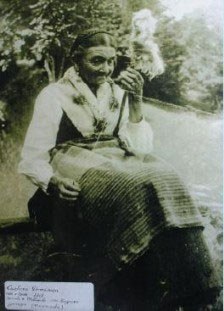
|
|
Traditional songs: "Quel uselin del Busc - Una sera di Settembre" medlay.
CANNABIS SATIVA
HOPING FOR ITS RETURN
Introduction of the autor
|
|
|
The hemp, that enjoyed free sowing until the early ‘40s, finds a favorable climate for its cultivation in Valgerola. The last pesant who cultivated it in Valgerola was Lino Balbi from Sacco Inferiore. He sowed ‘l canef” in the so called Riif mountainside, location above the Bitto River. The very same growing is now prohibited. It’s true that hemp, if grown in tropical countries, has a best quality for narcotic use, but for the fiber is the same. By the hemp is not discarded anything, from the root to the flower, going to fibers, hemp stalk and seeds. For the production of yarns the hemp is comparable to linen because the two plants are similar. Hemp has longer fibers than linen and people erroneously think that the grandmother tissues used for shirts or sheets are linen made, on the contrary usually they are hemp or mixed hemp made. It is difficult to see the difference between the two in a woven fabric. You can discover it only under a microscope, or by wringing the yarns. Those of the linen turn in a clockwise direction, the hemp yarns in a counterclockwise. Of course, to have these similar characteristics, hemp had to be left to rest in ash baths. Another peculiarity is the use of hemp for paper production. Unfortunately this is not possible anymore since the ban on plantation came into force. It would be more convenient and profitable for farmers to take advantage of many mountainous terrain in a state of abandoning, in order to cultivate plantations for paper production, better than the lumber. Transforming hemp as it was one hundred years ago is unthinkable. But using current technologies to produce paper or cloths would not imply any problem. With the hemp is possible to produce about 14,000 products. Everything happened during the years in which new techniques and equipments that would facilitate the processing plant were discovered. In the years 1937/38 the ban by the U.S. Government for cultivation of hemp came into force. The same government has also tried to extend it globally. Strange enough, but this ban happened just when machinery for the manufacture of synthetic fibers have been patented by the American DUPONT, creating major political and economic interests. From the agricultural standpoint, hemp has other great advantages. Ecologically is an excellent plant for the rotation of crops. It is resistant to parasites, does not need fertilizers and can be utilized only a little of bio. As a rule, with one or two years of hemp cultivation, weeds will disappear from the ground, allowing the plowing of other crops.
Ecologically, if you use a vegetable fiber in place of a petrochemical one is a benefit for the environment. The combination of CO2 into the atmosphere with photosynthesis creates a positive influence on the greenhouse effect: when it decomposes, the plant emits CO2 when it grows, instead, synthesizes it. The plant consumes carbon dioxide, three times more than any other plant and this has a beneficial effect on the Earth. In Switzerland, the production of hemp is allowed, of course, those who cultivate it must have a permission issued by the appropriate government offices. In addition, the farmer must have a firm that withdraws the product for industrial, textile, pharmaceutical or artisanal purposes. If Italy nowadays were back to producing hemp it would be done with prospects for development of fiber in various fields of technology and ecological. In the past there was much less fear towards nature than it is today. Did you know that the Renaissance paintings are painted on canvas? Today is possible to use hemp for buildings, to produce bricks (agglomeration of hemp and lime) extremely light, thermal insulating, with a great ability to absorb atmospheric moisture. This product is currently in sale on the market of the Swiss Confederation. For alimentary purposes, hemp seeds provide food for birds, aromatic oil good to contrast cholesterol and to produce proteins. In the last sixty years, the cultivation is prevented by misinformation and unnecessary well orchestrated prohibition. Spain has launched this business. Here in Italy has been banned and is considered only in terms of narcotic. In the time when it was allowed and free no one dreamed of using it for such purposes and it is a pity that all the qualities of this plant, in our country, are just now “going up in smoke”. In my paper I try to give a tribute to the customs and traditions of the people that generated us, with news and events that in part I lived as a boy when the hemp was free. I have acquired other informations by the elders during my frantic search of the latest equipment and the looms remained in Valgerola. Without regrets for that past, and passing over the today cannabis abuse, I hope to convey the capabilities of that world, now lost, whose interest was to defend the environment, to create a relationship in the working world, and the capacity of youth to learn from the experience of older people. By following these principles that I could have known and cherish, I am confident that humanity, from this yarn plant has nothing to fear. |
 |
|
|

|
|